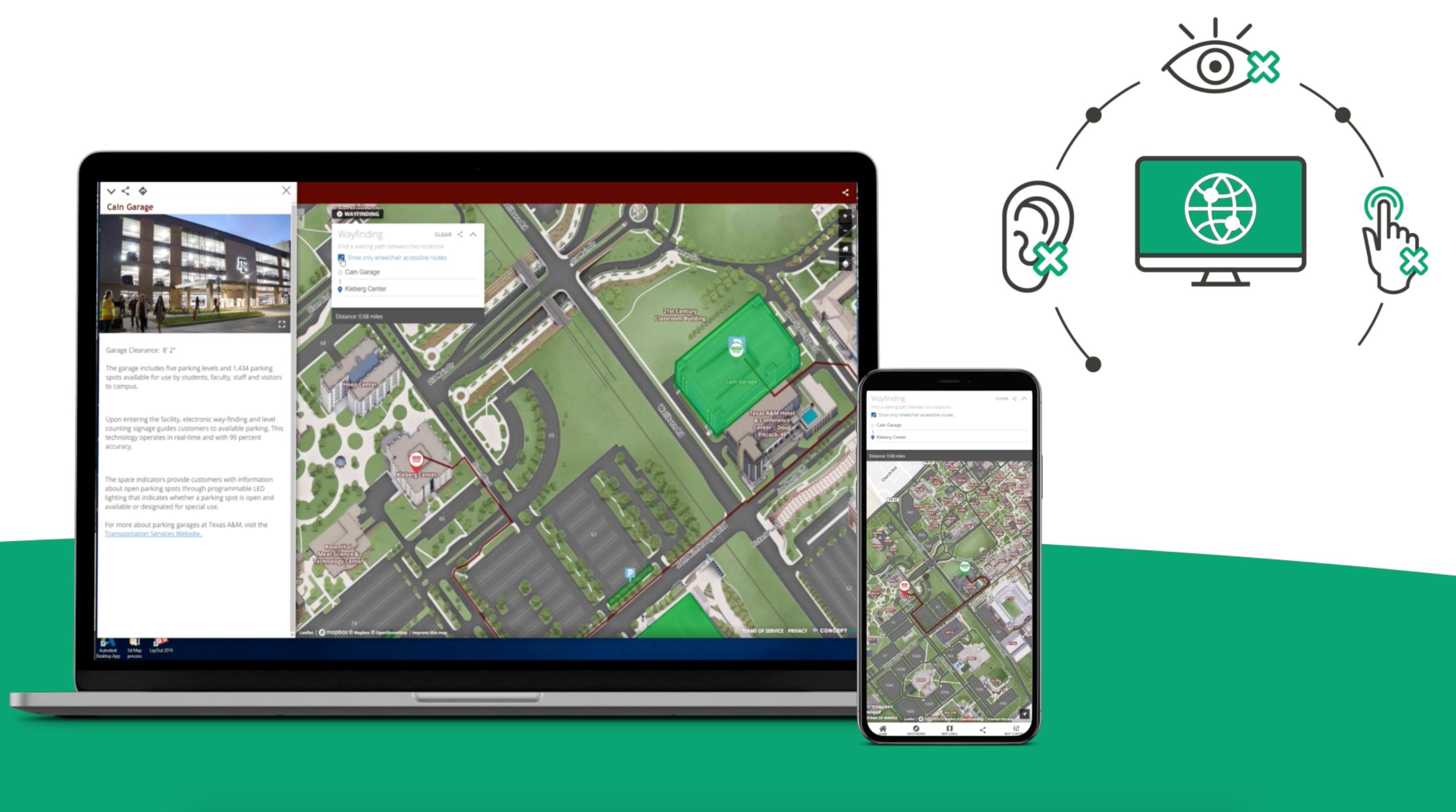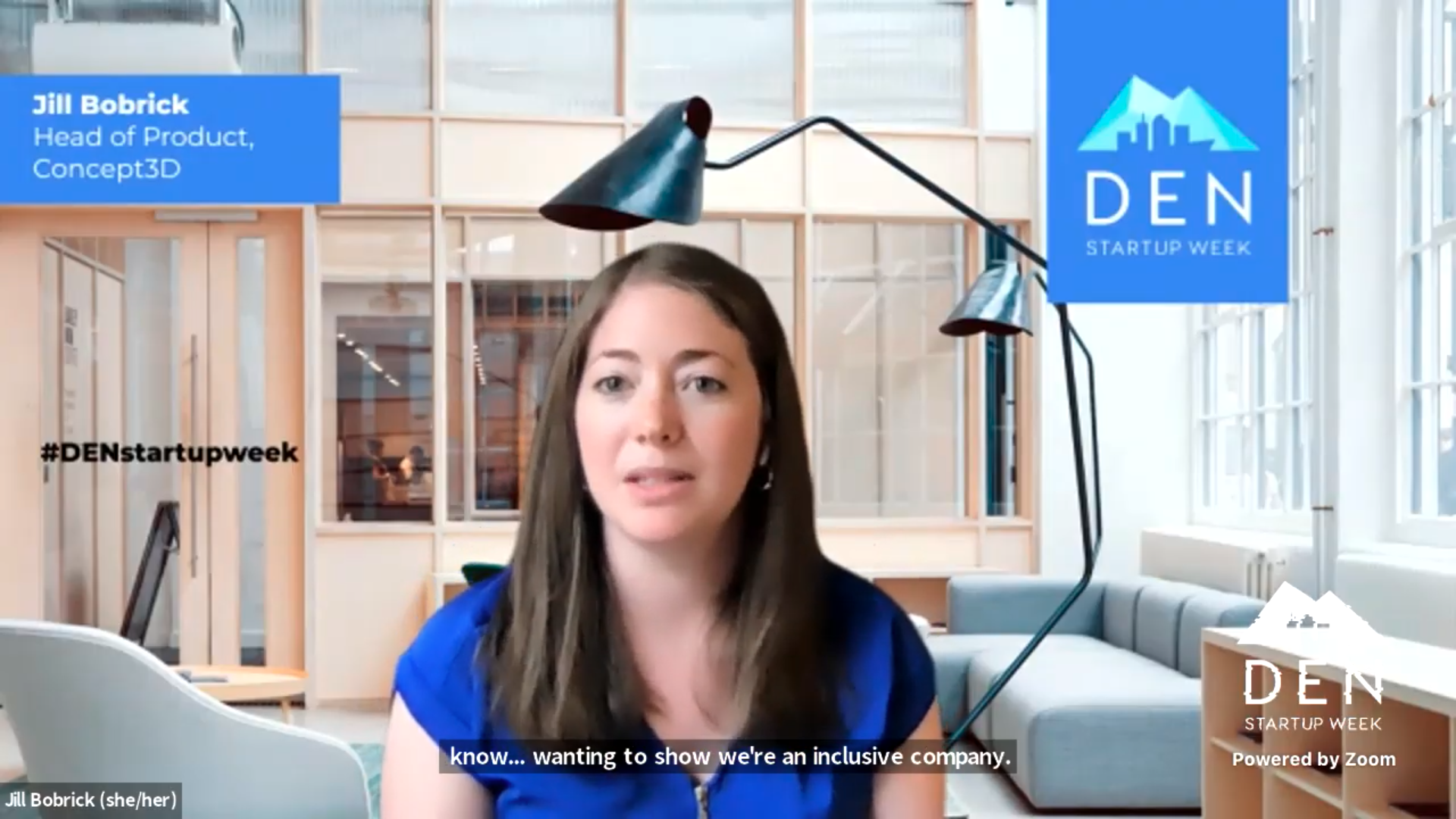Every fall, Denver Startup Week takes over the Denver tech scene. With offices located in Denver, Concept3D has been attending sessions for years, but this year we presented for the first time. Our Head of Product, Jill Bobrick, was part of a panel, “Why Every Product Needs an Accessibility Champion.“
This panel grew from two articles authored by Jill on Linkedin, Why Every SaaS Product Needs an Accessibility Champion Part 1 & Part 2. Jill is joined by Florence Lee, User Experience Architect at ITHAKA, Crystal Preston-Watson, Quality and Accessibility Engineer at Salesforce.org, Soren Hamby, Design Advocate at InVision, and the session was moderated by Erica Ellis, Inclusive Design Lead at Workday.
What is Accessibility
The panel kicks off with panelists saying how they define accessibility, going beyond the guidelines. There are plenty of guides out there. Soren referenced WCAG’s four principles: perceivable, operable, understandable, and robust, which do have a role in accessibility, though the panel agreed this is not what accessibility is. It is beyond checking the boxes of a VPAT. The consensus boiled down to ‘Everybody has access.’
How to Champion Accessibility
Getting internal buy-in for accessibility within product and design is often a challenge. However, the panel did not shy away from addressing the challenge. There are two pathways, the right thing to do and the bottom line approach. Sometimes referred to as ‘squeaky wheel’ or ‘Jiminy Cricket,’ this strategy goes back to accessibility is a human right, creating products that everyone can use. The panel did an excellent job of clarifying that it is additive to the end-result and getting others aware, involved, and excited about inclusivity in the product. Not finger-wagging, more bringing ideas to the table with diversity in viewpoint, and how that fulfills what the business is trying to accomplish is the core of the ‘Jiminy Cricket’ strategy.
Getting business involvement and commitment is also possible by focusing on the bottom line. Products built with accessibility in mind inherently have a larger market; more people can use it, more people can buy it. Concept3D has clients that use our interactive map primarily to create greater accessibility for their stakeholders. There is also a legal risk of being inaccessible. Lawsuits can be expensive both in dollars and time. Cyrstal probably had the quote of the session:
The money that folds!
The key to bringing accessibility to an organization is to begin.
Where to Start
To get a sense of the experience is a good place to start. Try navigating your computer or software without a mouse; this is partly what it is like to use the software with a screen reader. The next step would be to use a screen reader. Most phones and computers have a native app for screen reading.

The panel had many resources for anyone looking to learn more.
- tota11y – Shows how a website performs for different needs—looking just at color contrast or for a screen reader.
- 13 Letters – A podcast that tries to make accessibility accessible.
- Mismatch – By Kat Holmes, a book about designing for everybody.
- Level Access – Service that audits software for accessibility.
- Inclusive Design for a Digital World – A book with examples and guides for inclusive design by Regine M. Gilbert.
This summary does not cover it all, but the session is available on youtube, and if there is a specific question, please contact us; we are happy to chat.

